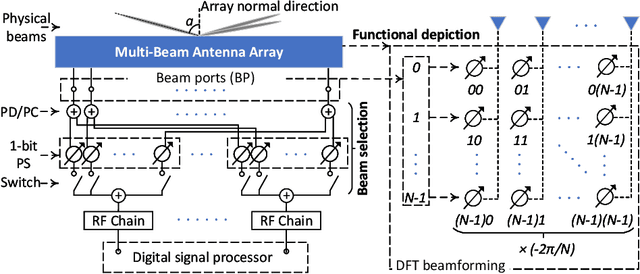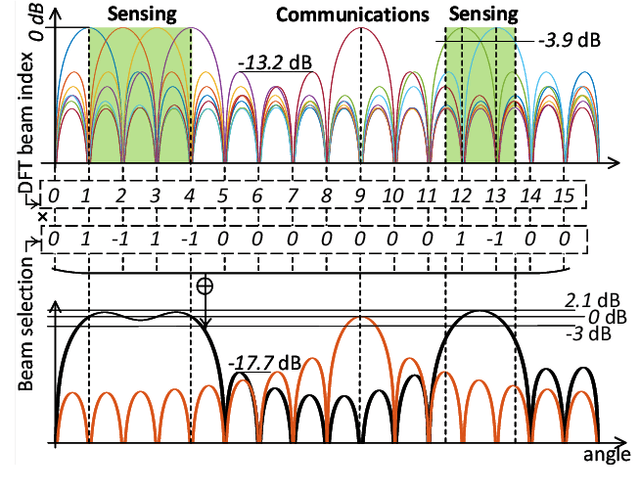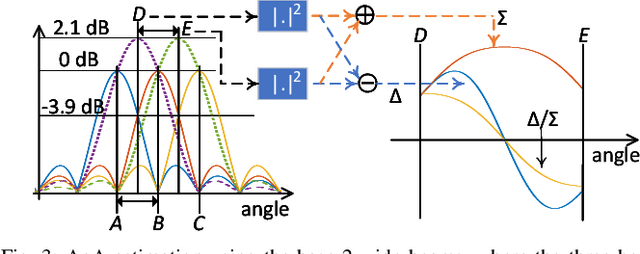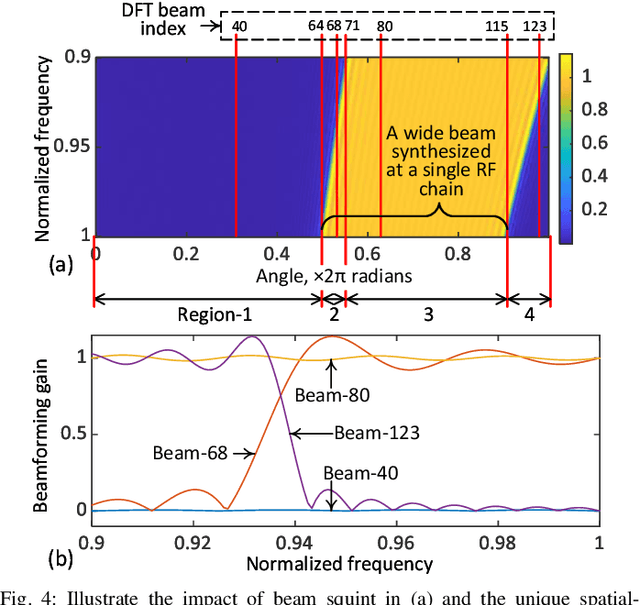Green Joint Communications and Sensing Employing Analogue Multi-Beam Antenna Arrays
Paper and Code
Aug 21, 2022



Joint communications and sensing (JCAS) is potentially a hallmark technology for the sixth generation mobile network (6G). Most existing JCAS designs are based on digital arrays, analog arrays with tunable phase shifters, or hybrid arrays, which are effective but are generally complicated to design and power inefficient. This article introduces the energy-efficient and easy-to-design multi-beam antenna arrays (MBAAs) for JCAS. Using pre-designed and fixed analog devices, such as lens or Butler matrix, MBAA can simultaneously steer multiple beams yet with negligible power consumption compared with other techniques. Moreover, MBAAs enable flexible beam synthesis, accurate angle-of-arrival estimation, and easy handling/utilization of the beam squint effect. All these features have not been well captured by the JACS community yet. To promote the awareness of them, we intuitively illustrate them and also exploit them for constructing a multi-beam JCAS framework. Finally, the challenges and opportunities are discussed to foster the development of green JCAS systems.
 Add to Chrome
Add to Chrome Add to Firefox
Add to Firefox Add to Edge
Add to Edge